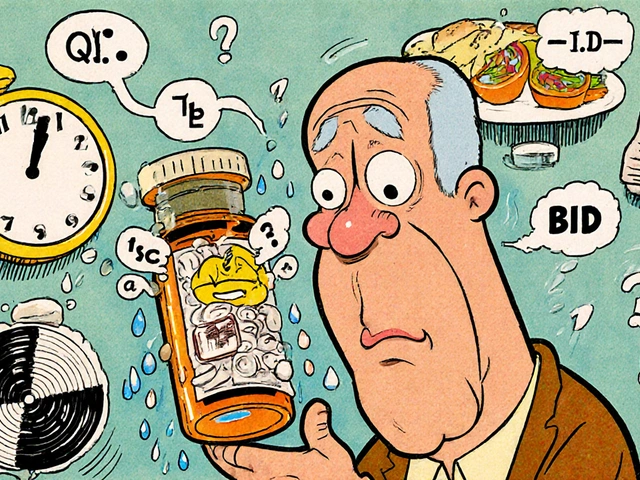Lipid Management Tips – Simple Ways to Control Cholesterol and Boost Heart Health
When you hear the word “lipid,” you might picture a lab report or a doctor’s note. In reality, lipids are just fats that travel in your blood, and keeping them in check is one of the easiest ways to protect your heart. Below are down‑to‑earth steps you can start using right now.
Know Your Numbers
The first move is to see what’s actually happening inside you. A standard lipid panel measures total cholesterol, LDL (the “bad” kind), HDL (the "good" kind), and triglycerides. Aim for LDL under 100 mg/dL, HDL above 40 mg/dL for men or 50 mg/dL for women, and triglycerides below 150 mg/dL. If you don’t have recent results, ask your doctor for a quick blood test – it’s painless and gives you a clear starting point.
Food Choices That Make a Difference
What you eat has the biggest impact on lipid levels. Swap out refined carbs and sugary drinks for whole grains, beans, and veggies. Foods rich in soluble fiber – like oatmeal, apples, and lentils – bind cholesterol in your gut and help flush it out.
Don’t forget healthy fats. A handful of nuts, a spoonful of olive oil, or a slice of avocado adds monounsaturated fat that can raise HDL while lowering LDL. Cut back on saturated fats found in red meat, butter, and full‑fat dairy; replace them with lean proteins such as chicken breast, fish, or plant‑based options.
Watch the hidden cholesterol culprits: processed snacks, fried foods, and fast‑food meals often pack trans fats that spike LDL and lower HDL. Reading ingredient lists for “partially hydrogenated oil” can keep you safe.
If you love a treat now and then, go for dark chocolate (70% cacao or higher) or a small serving of berries – both contain antioxidants that support heart health without wrecking your lipid profile.
Move More, Stress Less
Physical activity helps raise HDL and can lower triglycerides. Aim for at least 150 minutes of moderate cardio each week – think brisk walking, cycling, or swimming. Even a quick 20‑minute jog three times a week makes a noticeable difference.
Strength training adds muscle mass, which improves how your body processes fat. Simple bodyweight moves like squats, push‑ups, and lunges are enough to get started.
Stress isn’t just mental; it triggers hormones that raise blood lipids. Practice quick stress‑busting habits: a five‑minute breathing exercise, a short walk outdoors, or listening to calming music can keep cortisol in check.
Medications and Supplements
If lifestyle changes aren’t enough, doctors often prescribe statins, which lower LDL by up to 50 %. Newer drugs like PCSK9 inhibitors work for people who need extra help. Never start a medication without a prescription – discuss side effects and dosage with your healthcare provider.
Some supplements can complement your plan. Omega‑3 fish oil (EPA/DHA) lowers triglycerides, while plant sterols found in fortified spreads reduce LDL. Again, check with a doctor before adding them to your routine.
Track Progress and Stay Consistent
The secret to lasting lipid management is regular monitoring. Set a reminder to repeat your blood test every six months. Keep a simple food diary or use a free app to see how meals affect your numbers.
Remember, you don’t need to overhaul everything at once. Pick one change – maybe swapping soda for water – and build from there. Small steps add up, and over time you’ll notice better energy, fewer cravings, and healthier lab results.
MailOrderMeds offers many articles that dive deeper into specific drugs, diet plans, and exercise routines. Use the tag “lipid management” to explore detailed guides, real‑world tips, and patient stories that keep you motivated on your heart‑healthy journey.




